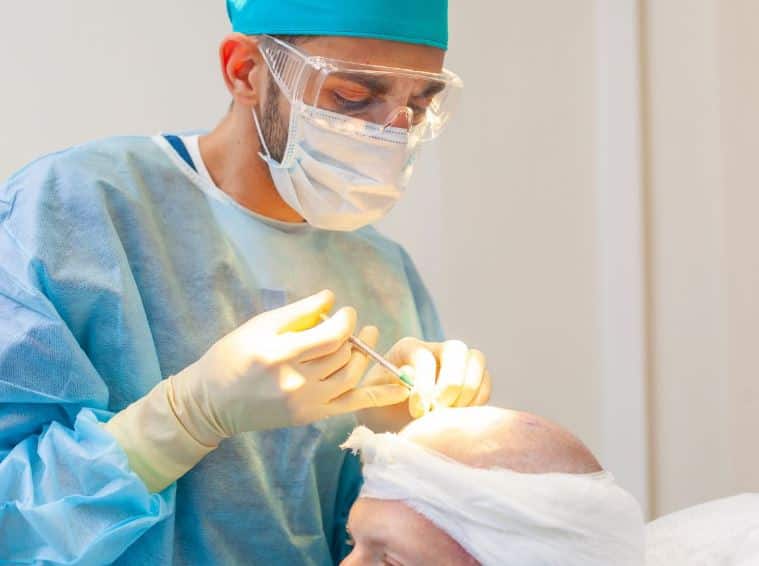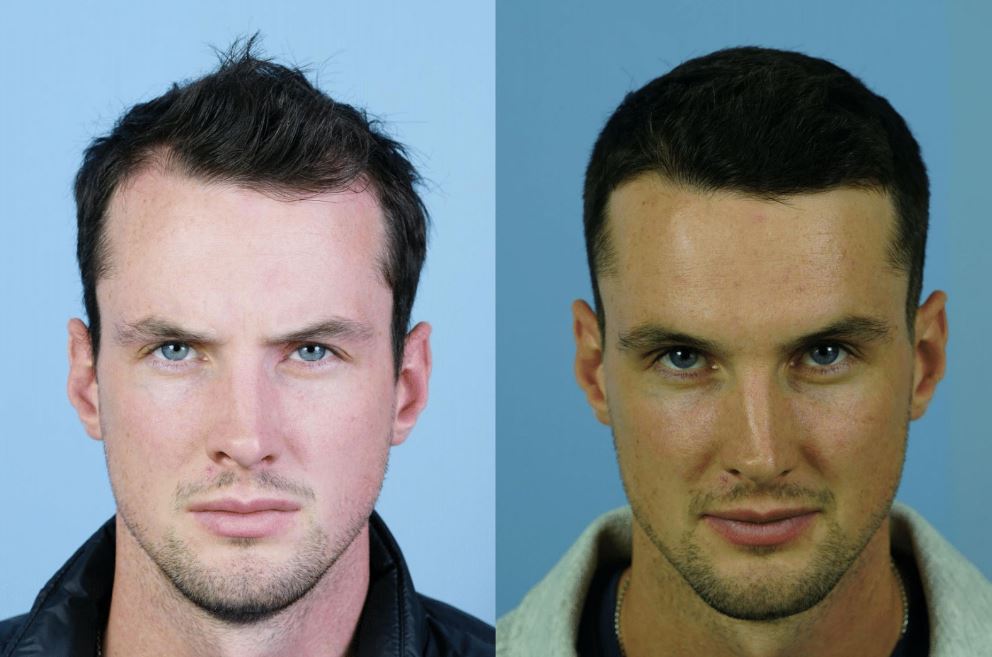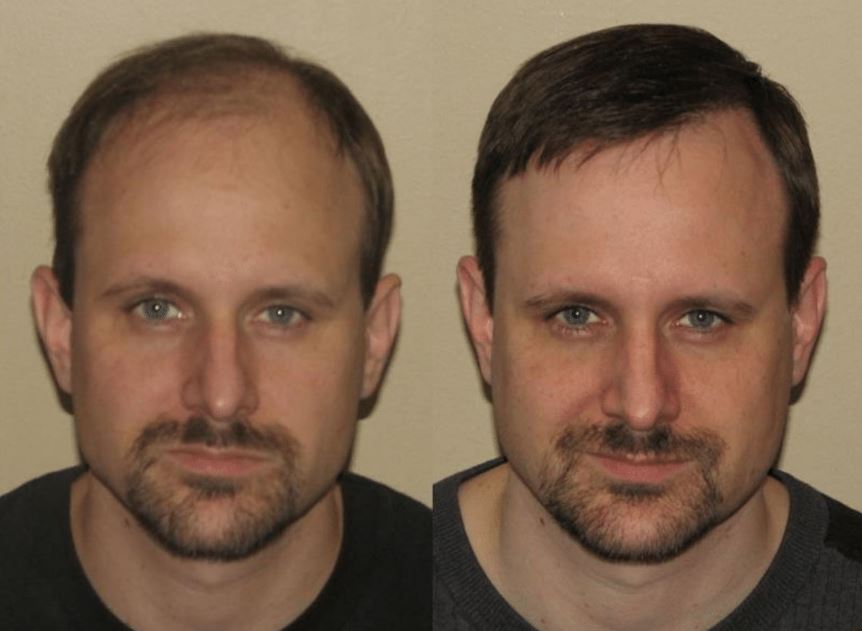Is A Hair Transplant Permanent?

A hair transplant is a permanent solution to hair loss. However, results may vary depending on several factors.
Baldness can make men and women feel less attractive. It can make them feel more self-conscious in meetings and presentations, and even in their social lives. If you have tried several hair loss solutions without any long-term success, you might be contemplating getting a hair transplant. A common question often arises: Is a hair transplant permanent? If you’re concerned about the longevity of a hair transplant, here’s what you need to know.
Types of Hair Transplant Procedures
There are two main hair transplant techniques: Follicular Unit Transplantation (FUT) and Follicular Unit Extraction (FUE). These methods mainly differ in their approach to harvesting hair grafts for transplantation and the type of scar they leave.
FUT (Follicular Unit Transplantation)
In FUT, a surgeon removes a strip of scalp from the donor zone, typically the back of the head where hair is resistant to balding. This strip is then dissected under a microscope into individual follicular units, each containing one to four hairs, for implantation.
One main advantage of this method is that it allows a high volume of grafts that can be harvested in one session, so this is often the option for patients requiring a large number of grafts. The main drawback of FUT is that it leaves a linear scar in the donor area. However, a skilled hair transplant surgeon can easily hide the scar under the patient’s existing hair to make it inconspicuous.
Follicular Unit Extraction (FUE)
FUE involves the individual extraction of hair follicles directly from the scalp using a punch device. Unlike FUT, FUE does not result in a linear scar. Patients are left with tiny, dot-like scars scattered throughout the donor area, which are less noticeable and allow for shorter haircuts.
FUE is often recommended for patients who have less extensive hair loss and don’t require a significant number of grafts. It’s also preferred by individuals who are likely to wear their hair short or are concerned about scarring. However, this technique can be more time-consuming and might require multiple sessions to achieve the desired density. It’s also typically more costly than FUT due to its labor-intensive nature.
Factors Influencing the Longevity of Hair Transplants
Transplanted hair continues to grow for a lifetime, as it retains its genetic resistance to balding. However, individual results may vary based on several factors, such as:
1. Quality of Donor Hair
The donor hair serves as the “seeds” of the hair transplant so they should be robust, dense, and genetically resistant to balding. The ideal donor hair matches the color and texture of the existing hair to ensure a natural look. If the donor hair is weak or sparse, it may not provide the desired coverage or may not last as long.
2. Surgeon’s Expertise and Technique
Behind every successful hair transplant is an excellent hair transplant surgeon. In other words, your results depend heavily on your surgeon’s skill, experience, and artistry. A hair transplant surgeon must have an eye for aesthetics to design a natural-looking hairline. This requires a keen understanding of how hairlines vary depending on age, gender, and ethnicity.
Additionally, the way hair naturally grows varies in different parts of the scalp. In the front, hairs tend to grow at a sharper angle, while on the top and back, they grow more upright. A skilled surgeon will implant hair follicles in a way that mimics these natural growth patterns.
Lastly, each patient’s case is unique, and a one-size-fits-all approach doesn’t work in hair transplantation. Your surgeon must tailor the procedure to fit your specific needs and desired results.
3. Post-Surgery Care and Lifestyle Factors
The immediate care following a hair transplant ensures the longevity of the transplanted grafts. This includes following the surgeon’s instructions on wound care, avoiding strenuous activities, and attending follow-up appointments.
Lifestyle choices can also significantly impact the longevity of hair transplants. For example, smoking can impair blood flow to the scalp, affecting the health of transplanted follicles. Similarly, a nutritious diet rich in vitamins and minerals supports hair health.
4. Genetic Factors and Age-Related Hair Loss Progression
The individual’s genetic predisposition to hair loss also influences the longevity of a hair transplant. If someone has a strong family history of hair loss, they may continue to experience natural hair thinning or loss in other areas of the scalp, which can affect their overall appearance.
Another factor to consider is aging. As a person ages, their hair naturally thins and loses density. This natural progression can impact the areas surrounding the transplanted hair. Surgeons often plan for this by predicting future hair loss patterns and adjusting the transplant design accordingly. However, ongoing hair loss can still affect the long-term results of the transplant.
How Much Is a Hair Transplant?
The cost of a hair transplant varies widely depending on several factors, including the location of your provider, the surgeon’s experience, the technique used, the number of grafts required, additional treatments, and post-operative care. Hair transplants require an upfront investment, but when done by an experienced surgeon, the results can look stunning and natural. You may contact us to get a personalized treatment for your hair transplant surgery.
Finding the Best Hair Transplant Surgeon.
The best hair transplant surgeon typically possesses the highest level of proficiency in both FUT and FUE techniques, a strong track record of successful outcomes, positive feedback from previous patients, and a reputation for ethical practice and patient care.
Additionally, the best surgeon for an individual patient also depends on personal needs, such as the type of hair loss, budget, and location. Patients need to conduct thorough research, consult multiple experts, and consider before-and-after photos of previous patients when selecting a surgeon who best fits their specific needs and expectations.
If you’re looking for a hair transplant surgeon in the Minneapolis area with decades of experience and a wide collection of stunning hair transplant results, look no further than Shapiro Medical Group.
Call us to schedule a consultation today. We serve patients in and around Minneapolis, including Golden Valley, Columbia Heights, Roseville, Richfield, and the greater Minnesota area.
Hair Transplant Before and After Photos

FUE hair transplant before and after (1,471 grafts)

FUT hair transplant before and after (3,500 grafts)

